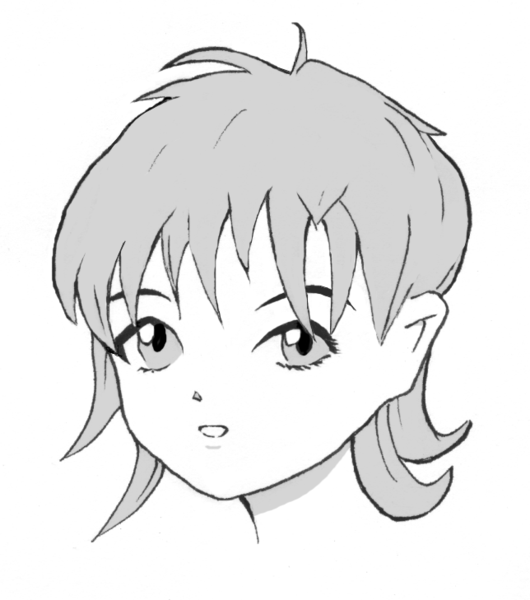 A number of folks have written on how many teens are attracted to Manga, Japanese import comics/graphic novels or those sequential art narratives done in that style. Often Manga are paperback-length and -sized books with each title spanning multiple volumes in a series. Brent Wilson has done some research on Manga and literacy. So has Michael Bitz, and the Manga explosion is yet another area where librarians' empirical research as revealed in their periodicals and conferences has helped inform our thinking. Yet, there are many who still think that this Manga thing is just a fad.
A number of folks have written on how many teens are attracted to Manga, Japanese import comics/graphic novels or those sequential art narratives done in that style. Often Manga are paperback-length and -sized books with each title spanning multiple volumes in a series. Brent Wilson has done some research on Manga and literacy. So has Michael Bitz, and the Manga explosion is yet another area where librarians' empirical research as revealed in their periodicals and conferences has helped inform our thinking. Yet, there are many who still think that this Manga thing is just a fad.Perhaps, but it is worth noting that Manga titles have been dominating the graphic novel sales market for some time now. See ICV2's most recent top 20 graphic novels by monthly sales, and you'll note that only 3 titles are American graphic novels, meaning that they're published by American companies. Since two of the three are penned by Brit genius Alan Moore, we could say that only one of the books, an Indiana Jones book hitching a ride on the summer blockbuster movie, is a top American seller. As well, the two Moore tales, as ICV2 mentions, are over 20 years old.
Of course, sales do not equate to quality (though the ranked Moore titles are pretty darn good), and there's not a demographic breakdown on the ICV2 website to tell us who is buying these books, but a trip to the local bookstore and a glance down the Manga isle or isles can be pretty telling. I know there are many academics that want to separate the market from their work. I'm one of those realists who understands that's something that just can't be done. We can pretend and hope by pretending we makes it so, but we're just living a "consensus charade."
Since "graphic novel" is somewhat of a marketing term, I don't think we can avoid the marketing influence as fact of life, even academic life, when we consider them and their readership and their pedagogical potential. Consider that a teacher's awareness of the market can help him or her understand the reading habits of his or her students, help him or her make choices of texts to bring into class, suggest to students, or accept when students read them independently in class. I've been in classrooms where students snuck Manga in and out of their bookbags because the teachers didn't see it as appropriate reading material -- at any time (as the students themselves told me). Perhaps some knowledge of young people's authentic reading interests and habits might have softened these teachers' outlooks.
According to the sales figures, that would mean accepting that a whole lot of somebodies are reading Manga and enjoying it!

No comments:
Post a Comment